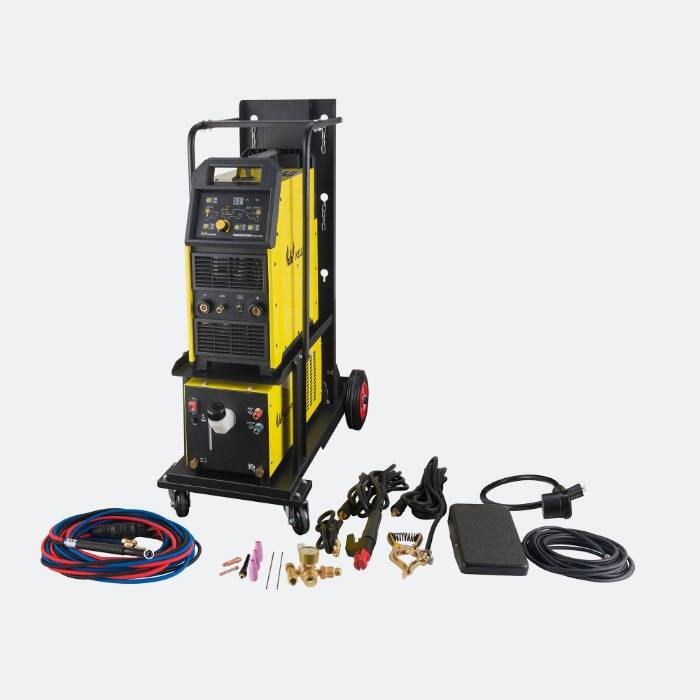 Where To Buy
Where To Buy  Sign In
Sign In-
Cart
Loadding...
These two systems work hand in hand to manage wire delivery and arc output effectively.
In the evolving world of metal fabrication, precision tools are key to meeting the high demands of industrial welding. The IGBT Inverter Digital Double Pulse MIG MAG Welder offers just that—greater arc stability and refined control across a wide range of materials. When paired with the IGBT Inverter Split Wire Feeder Industrial MIG MAG Welder, this combination helps deliver clean, consistent welds while supporting a more flexible working setup.
These two systems work hand in hand to manage wire delivery and arc output effectively. The double pulse welder regulates heat with precision through alternating high and low current cycles. Meanwhile, the split feeder ensures smooth, continuous wire feed even over longer distances, making it ideal for industrial-scale or on-site welding environments.
Cleaner Results with Less Effort
One of the primary advantages of the double-pulse welder is its ability to reduce spatter. By maintaining a stable arc and controlled droplet transfer, it produces cleaner welds with less post-processing. This can significantly lower time spent on grinding and polishing, especially when working on stainless steel or aluminum.
The split feeder plays a vital role in this process. It separates the wire feed unit from the power source, enabling more freedom of movement and reliable feeding even when space is limited or when cables need to run over long spans. This is particularly useful in shipyards, steel structure assembly, and workshop setups where mobility is key.
Better Weld Appearance and Control
Using digital pulse technology, operators can fine-tune heat input to prevent burn-through on thinner materials. This helps in producing uniform bead profiles and avoiding common welding defects. In industries where appearance and strength matter equally—such as food-grade equipment or custom metalwork—this level of control makes a clear difference.
The inverter design ensures high-efficiency operation, fast arc start, and stable output. For production teams, this means shorter cycle times and more predictable results with each pass. It also reduces energy consumption, lowering the long-term operational cost of welding activities.
Flexibility in Application
From light sheet metal to thick structural steel, this setup adapts well across industries:
Automotive repair shops benefit from controlled heat input for body panels.
Construction projects gain efficiency through reliable wire feeding on large sites.
Fabrication shops handling multiple alloys can switch modes easily with digital presets.
Heavy industry teams rely on precise arc control to ensure strong, reliable joints.
The double pulse settings also support pulse-on-pulse welding for smoother surface finishes, while the split feeder provides steady wire tension even at variable angles or when working at heights.
Operator-Friendly Features
Both systems are designed with usability in mind. Clear control panels, preset memory channels, and adjustable pulse parameters allow welders to get started quickly. The feeder’s separation makes the equipment lighter to handle during setup and movement, which helps improve safety and comfort.
Furthermore, advanced features like anti-stick control, overheating protection, and adaptive feedback mechanisms contribute to a stable and user-friendly welding experience.
This technology isn’t just about delivering welds—it’s about creating better results with fewer complications. Whether you're managing a busy fabrication floor or handling mobile repair projects, this system gives you the tools to do the job right.
Subscribe to Our Newsletter!